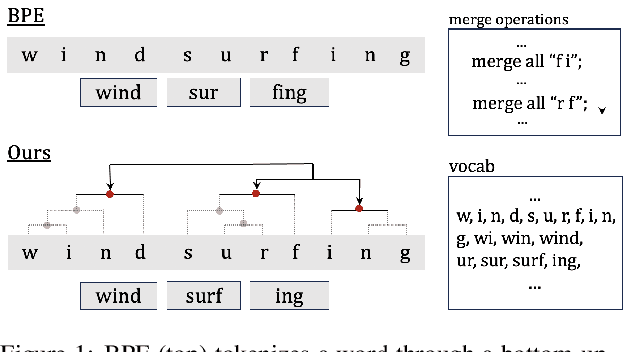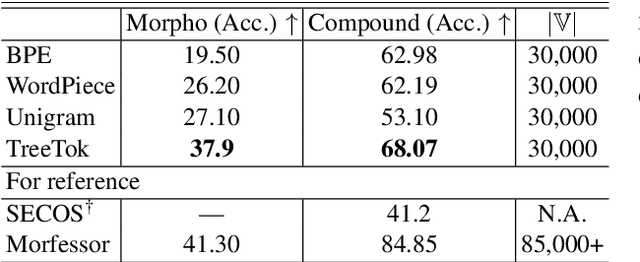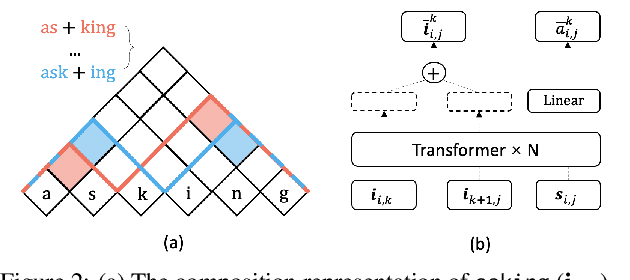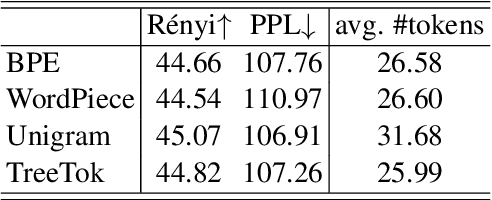Unsupervised Morphological Tree Tokenizer
Paper and Code
Jun 21, 2024



As a cornerstone in language modeling, tokenization involves segmenting text inputs into pre-defined atomic units. Conventional statistical tokenizers often disrupt constituent boundaries within words, thereby corrupting semantic information. To address this drawback, we introduce morphological structure guidance to tokenization and propose a deep model to induce character-level structures of words. Specifically, the deep model jointly encodes internal structures and representations of words with a mechanism named $\textit{MorphOverriding}$ to ensure the indecomposability of morphemes. By training the model with self-supervised objectives, our method is capable of inducing character-level structures that align with morphological rules without annotated training data. Based on the induced structures, our algorithm tokenizes words through vocabulary matching in a top-down manner. Empirical results indicate that the proposed method effectively retains complete morphemes and outperforms widely adopted methods such as BPE and WordPiece on both morphological segmentation tasks and language modeling tasks. The code will be released later.
 Add to Chrome
Add to Chrome Add to Firefox
Add to Firefox Add to Edge
Add to Edge